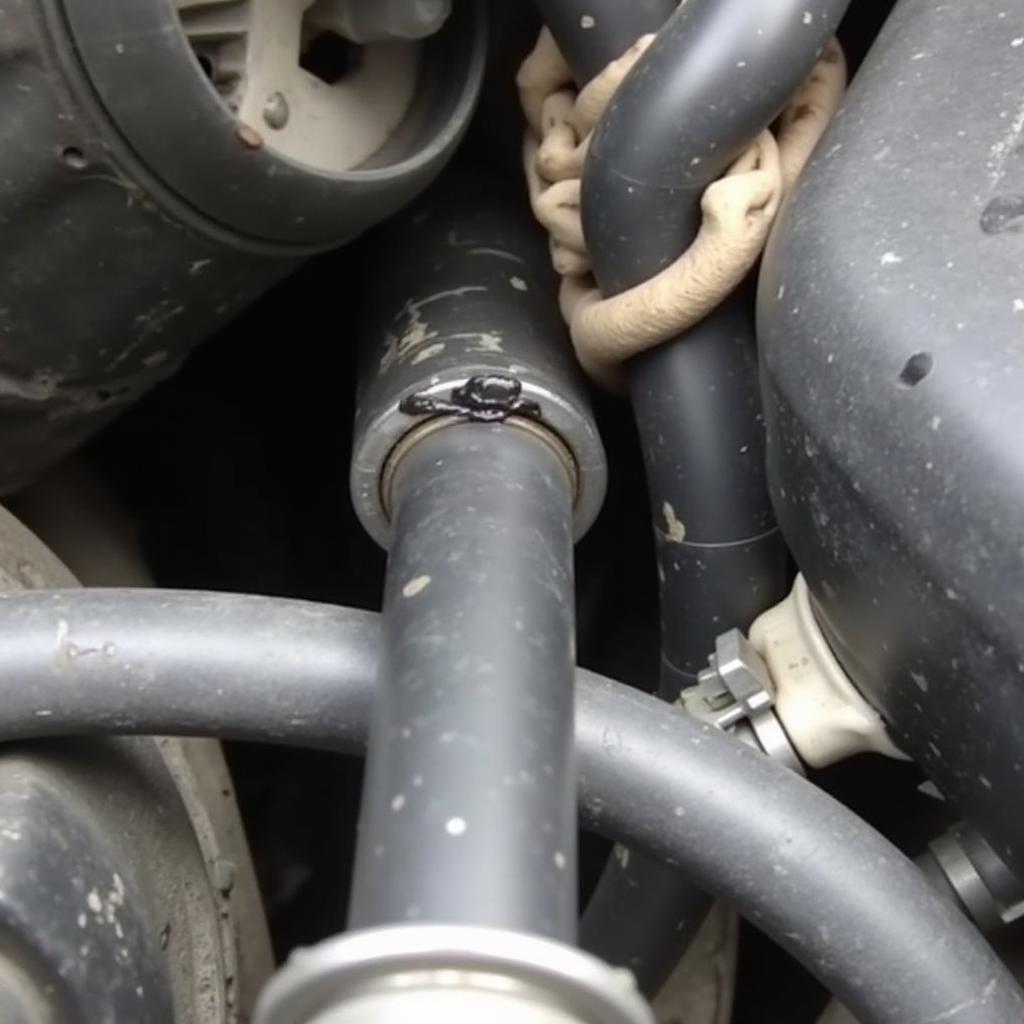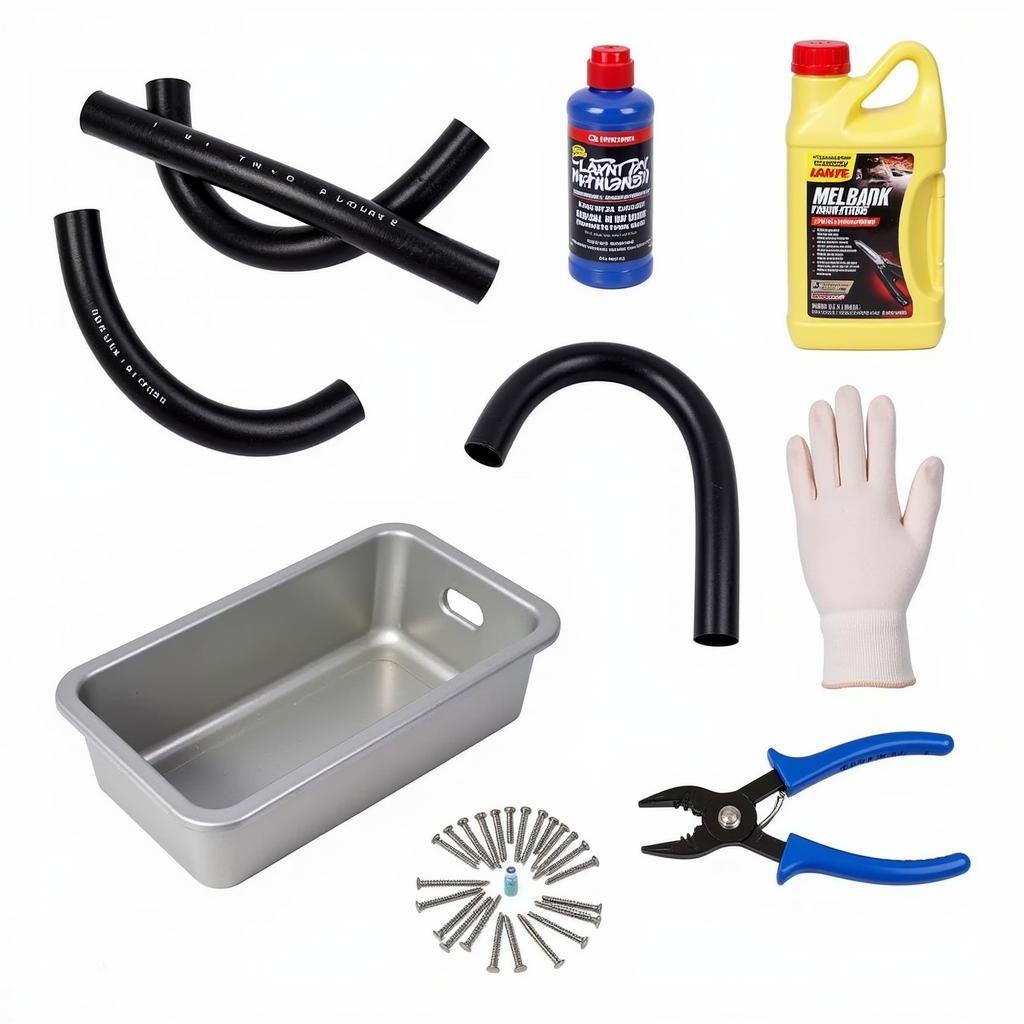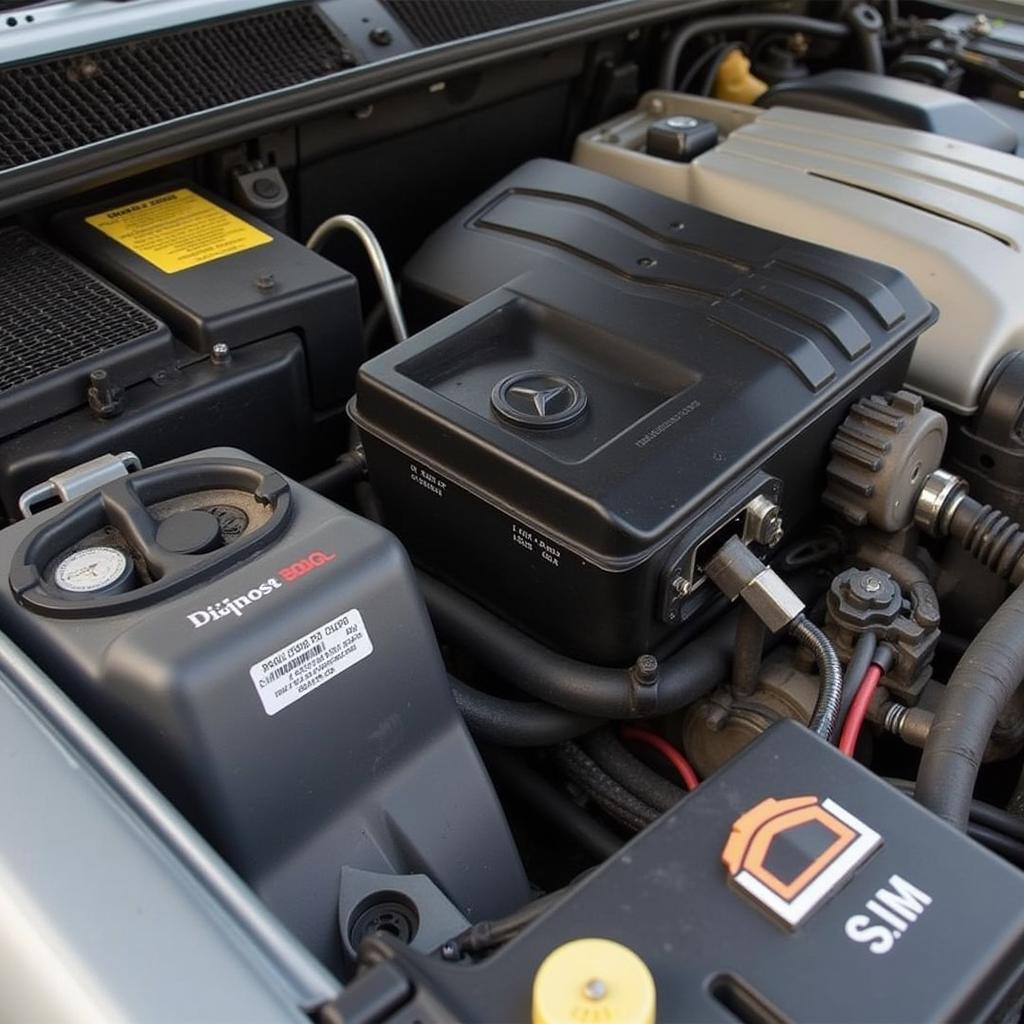A leaking or damaged radiator hose in your 2001 Mercedes ML430 can lead to overheating and serious engine damage. Knowing how to diagnose and fix this issue can save you time and money. This guide provides a step-by-step approach to tackling this common problem, empowering you to take control of the repair process.
Identifying a Faulty Radiator Hose
Before diving into the repair, you need to confirm that the radiator hose is indeed the culprit. Look for these telltale signs:
- Coolant leaks: Check for puddles of coolant under your vehicle, particularly after it’s been parked for a while. The leak may be a slow drip or a more substantial stream.
- Low coolant level: A consistently low coolant level in the reservoir is a strong indicator of a leak somewhere in the system, often the radiator hose.
- Overheating engine: If your engine temperature gauge is consistently high, a leaking radiator hose could be preventing proper coolant circulation.
- Visible damage: Inspect the radiator hoses for cracks, bulges, or soft spots. These are clear signs of wear and tear.
- Sweet smell: A sweet, syrupy odor coming from the engine compartment can indicate a coolant leak.
 Leaking Radiator Hose on a Mercedes ML430
Leaking Radiator Hose on a Mercedes ML430
Gathering Your Tools and Materials
Having the right tools and materials readily available will streamline the repair process. Here’s what you’ll need:
- New radiator hose(s): Purchase high-quality hoses specifically designed for your 2001 Mercedes ML430.
- Coolant: Ensure you have the correct type of coolant for your vehicle.
- Screwdrivers: A variety of sizes, both Phillips and flathead, may be needed.
- Pliers: Useful for gripping and removing hose clamps.
- Socket set: May be required to remove other components for access.
- Drain pan: To collect the old coolant.
- Funnel: For refilling the coolant.
- Gloves: To protect your hands.
- Safety glasses: To protect your eyes.
 Essential Tools and Materials for Radiator Hose Replacement
Essential Tools and Materials for Radiator Hose Replacement
How to Fix Radiator Hose 01 Mercedes ML430: A Step-by-Step Guide
- Allow the engine to cool completely: Working on a hot engine is dangerous.
- Locate the faulty hose: Identify the specific radiator hose that needs replacing.
- Drain the coolant: Place the drain pan under the radiator petcock and open it to drain the old coolant.
- Remove the hose clamps: Use pliers to loosen and remove the clamps securing the hose to the radiator and engine.
- Detach the hose: Carefully wiggle the hose free from its connections. Be prepared for some residual coolant spillage.
- Install the new hose: Position the new hose onto the radiator and engine connections, ensuring a snug fit.
- Secure the clamps: Tighten the hose clamps securely.
- Refill the coolant: Using the funnel, refill the radiator with the correct type and amount of coolant.
- Start the engine: Let the engine run for a few minutes to circulate the coolant.
- Check for leaks: Inspect the new hose and connections for any signs of leaks.
- Top off the coolant: Add more coolant if necessary to bring the level to the appropriate mark.
Conclusion
Replacing a radiator hose on a 2001 Mercedes ML430 is a manageable task with the right guidance. This comprehensive guide provides you with the knowledge and steps necessary to how to fix radiator hose 01 mercedes ml430 issues effectively. Remember to prioritize safety and always use the correct tools and materials for the job.
FAQ
- How often should I replace my radiator hoses? It’s generally recommended to replace radiator hoses every 4-6 years or as needed if they show signs of wear.
- Can I use any type of coolant? No, use the coolant specified in your owner’s manual for your 2001 Mercedes ML430.
- What if the leak persists after replacing the hose? There might be another issue, such as a faulty radiator or water pump. Consult a qualified mechanic.
- How much does it cost to replace a radiator hose professionally? The cost varies depending on location and labor rates, but it’s typically less expensive to do it yourself.
- What are the signs of a failing water pump? Signs include overheating, coolant leaks, and a whining noise from the pump.
Need further assistance? Contact us via Whatsapp: +1 (641) 206-8880, Email: CARDIAGTECH[email protected] or visit us at 276 Reock St, City of Orange, NJ 07050, United States. Our customer service team is available 24/7.


